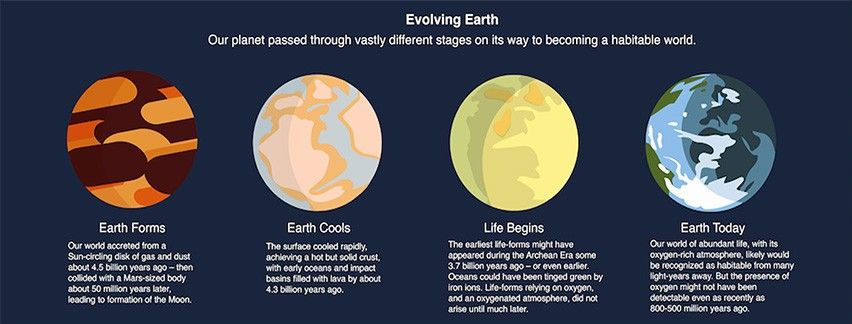Evolving Earth
June 13, 2023
| Credit | Infographic: NASA/JPL-Caltech/Lizbeth B. De La Torre |
|---|---|
| Language |
|
Our planet passed through vastly different stages on its way to becoming a habitable world.



























